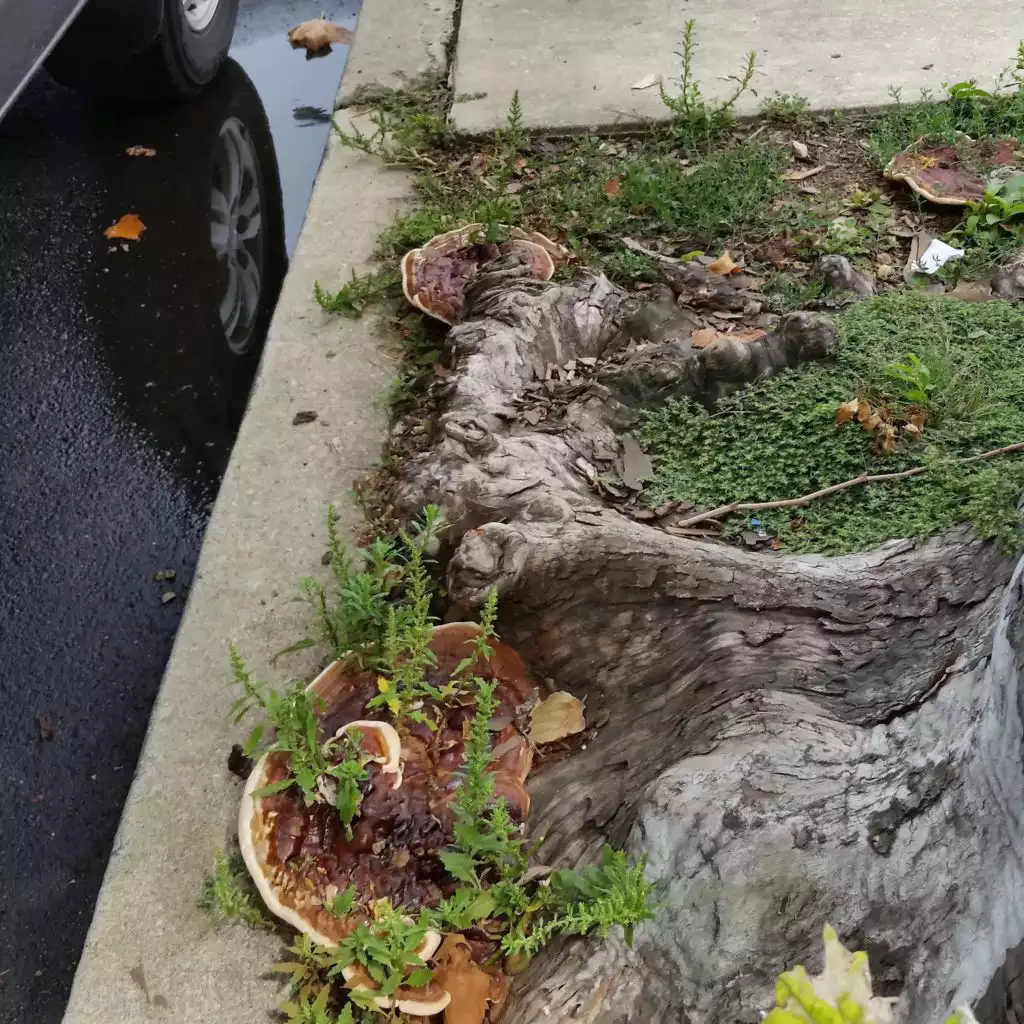
As my grandmother said, “A change of scene is as good as a rest.” With this in mind, a friend and I have been planning weekly lunch hour work breaks this summer to get in a rejuvenating hour somewhere other than the Witherspoon Street corridor, preferably outdoors. We managed to picnic in the Institute Woods, walk on campus to a hidden garden, share food with the squirrels at the neighborhood park, sit and listen to the birdcalls, and return again to take a lingering stroll through Dohm Alley, make a photo shoot session at Morven Garden and escape to the “beach” at Woodrow Wilson School. Stopping and being quiet in a place outdoors means noticing and looking closer, seeing and hearing details missed in the flurry of daily obligations and routines.
On one summer woods walk we found a massive cedar tree trunk, downed and rotting, crawling with creepy-crawlies and fuzzy with mushrooms and moss. It was a very hot day and the grove was cool and quiet, except for the buzz of insects. Lost in this tiny universe of activity, hidden until that moment in the big open world, I thought of how long the trees had stood, wondered what the grove looked like 100 years before and speculated on the forces which brought them down. That evening, in a moment of confluence, I listened to Ann Patchett observe, on writing, “I am a giant compost heap and everything I interact with, every experience I’ve had, gets shoveled onto the heap where it eventually mulches down, is digested and excreted by worms, and rots. It’s from that rich, dark humus, what you’ve encountered, what you know and what you’ve forgotten that ideas start to grow.”
When travel isn’t possible, these days I take in and share nature in photographs, living vicariously by looking at photos of places others visit and revisiting my favorite spots. The world feels better when I’ve stacked my social media feeds to show the Cornell Ornithology Lab’s Bird Cams and the faraway and exotic birds and nests my neighborhood lacks. A friend’s lakeside property with a bamboo grove and Florida wetlands view and the Colorado mountains of Telluride fill my screen and I imagine myself there when getting out isn’t possible.

The Overstory, an epic read which inspired this post, is told in overlapping stories that ring and circle like a tree’s trunk, from antebellum New York to the late twentieth-century Timber Wars of the Pacific Northwest and beyond. Each character is called by trees to save the remaining forest. Seeing the vast connected natural world parallel to and unremarked by human progress, this motley handful of people are all drawn to act against collapse and catastrophe. Please enjoy some recent additions to our Science and Nature neighborhood listed below. If the trees can talk, what do they tell us? “Listen, there’s something you need to hear.”
